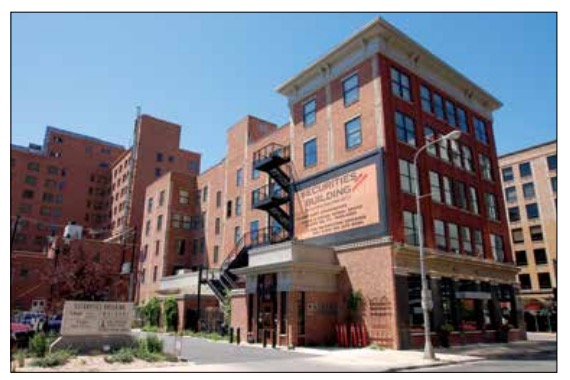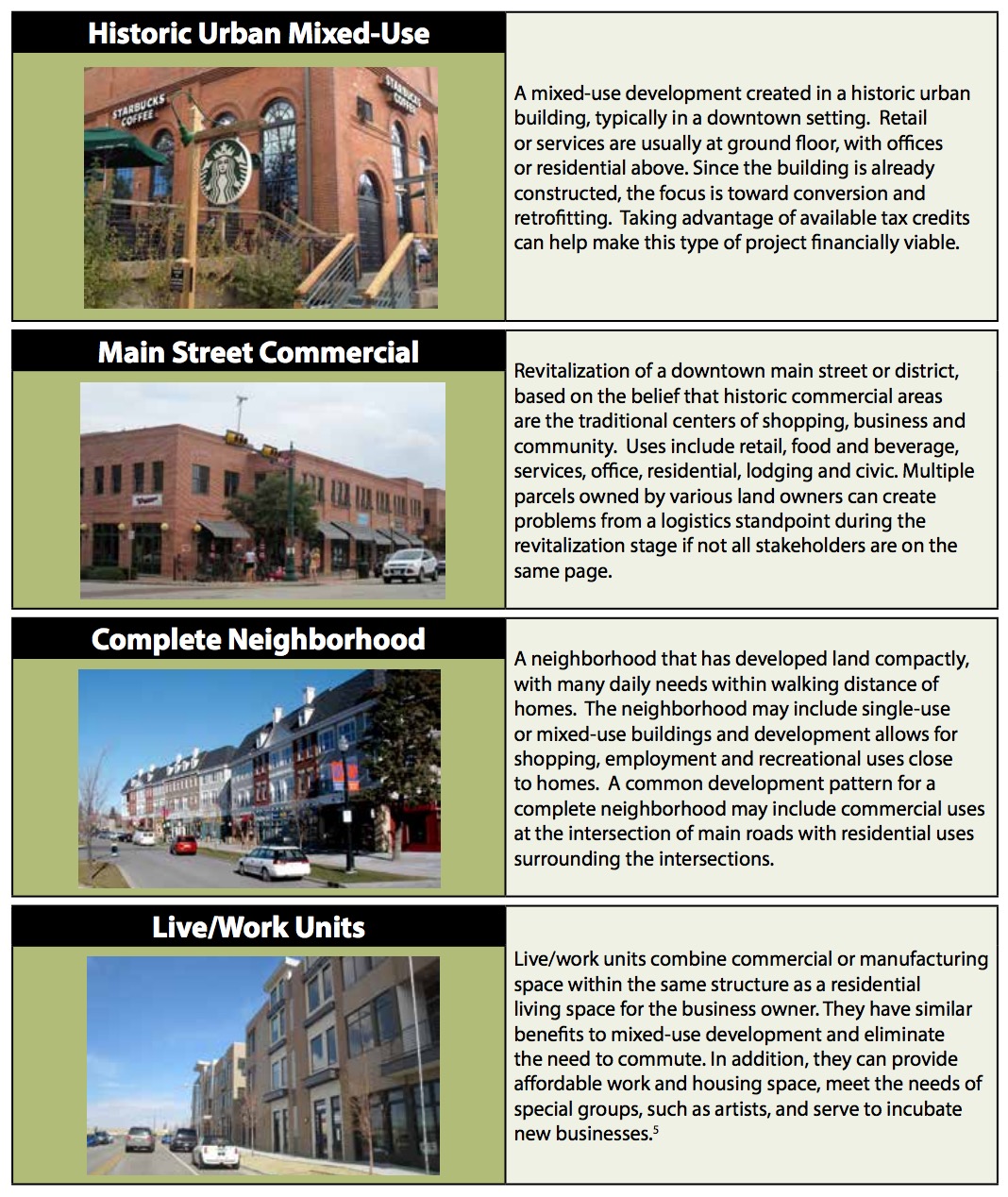SONORAN INSTITUTE
Executive Summary
 People’s attitudes about where they want to live, work, shop and play are changing. According to the National Association of Realtors (NAR) “2013 Community Preference Survey,” 60 percent of respondents favor a neighborhood with a mix of houses, stores and other businesses that are within walking distance, rather than neighborhoods requiring driving between home, work and recreation. Respondents indicated that while the size of a home or yard does matter, most are willing to compromise size for a preferred neighborhood and less commuting. For example, 55 percent of respondents were willing to forgo a home with a larger yard if it meant they could live within walking distance of schools, stores and restaurants.
People’s attitudes about where they want to live, work, shop and play are changing. According to the National Association of Realtors (NAR) “2013 Community Preference Survey,” 60 percent of respondents favor a neighborhood with a mix of houses, stores and other businesses that are within walking distance, rather than neighborhoods requiring driving between home, work and recreation. Respondents indicated that while the size of a home or yard does matter, most are willing to compromise size for a preferred neighborhood and less commuting. For example, 55 percent of respondents were willing to forgo a home with a larger yard if it meant they could live within walking distance of schools, stores and restaurants.
These trends are occurring in the Rocky Mountain West as well. The Sonoran Institute’s 2013 report, “RESET: Assessing Future Housing Markets in the Rocky Mountain West,” found that an increasing segment of the population wants to live in close proximity to their workplace, restaurants, schools, stores, entertainment and recreational opportunities. Similar to the NAR study, 90 percent of RESET’s survey respondents said they would prefer living within an easy walk to other places in the community. More than nine out of ten people said they prefer neighborhoods closer to open space, trails and recreation. They are also willing to pay more—on average 18.5 percent more—to live in a “walkable” neighborhood.
The influence these trends are having on housing demand and residential development has been well chronicled. The implications for commercial development have received less attention, but it is clear that the commercial landscape is also changing. Along with economic, demographic and consumer preference trends, technology – particularly online shopping – is having a significant influence on consumer behavior that is beginning to change commercial real-estate markets. Among other things, these changes are driving retailers to look at smaller formats in areas with higher foot traffic, such as mixed-use areas where housing and office space is located near stores.
While consumer and business interest for places that offer a mix of land uses (e.g., office, retail, entertainment and housing) is clear, getting mixed-use off the ground is a struggle in many markets, particularly in smaller cities and towns. Recognizing the importance of these trends on communities around the West, the Sonoran Institute commissioned MXD Development Strategists to analyze commercial market trends in the Rocky Mountain West, with a focus on the role of mixed-use development. The study was designed to address the following questions:
- How are commercial markets changing, both nationally and in the Rocky Mountain West?
- Is mixed-use development occurring in the Rocky Mountain West, and if so, how successfully?
- What are the opportunities and challenges associated with mixed-use development?
- Are some communities better suited for certain types of mixed-use development than others?
- What are common elements of and strategies for successful mixed-use development?
The study examined broad trends in the mixed-use development landscape, and through specific case studies in the Rocky Mountain West. In addition to conducting research and data analysis, MXD interviewed county and municipal officials, planners, real estate brokers, consultants and developers across four Rocky Mountain West states.
The research focused on communities in Montana, Wyoming, Idaho, and western Colorado, including a cluster analysis, which grouped the communities into three tiers based on population, growth, income, age, and education characteristics. The analysis below provides recommendations for the types and scale of mixed-use development that is most appropriate in different types of communities, which is intended to help both the public and private sectors set realistic expectations for the type of projects that are most likely to succeed in different markets.
The report’s major findings include:
As with residential, the nation’s commercial market landscape is changing.
Retail stores and shopping centers are here to stay, but retailers have made significant changes in response to the growth of online retailing and they need to continually redefine their stores’ identities to stay up-to-date with emerging trends. One of the largest adjustments has been a general downsizing in store size, as the requirements for storage space, and even floor space overall has reduced.1 Across North America, retailers are shifting from “super-sized” to “right-sized” stores. Larger retailers are no longer required to keep vast amounts of stock available on-site for potential shoppers. This has led not only to smaller stores with less inventory, but also to fewer stores in general.
The two dominant population cohorts in the U.S., Generation Y and Baby Boomers, will continue to drive a shift toward mixed-use development.
Generation Y displays a lifestyle preference for walkability and the sense of place and vitality that come with mixed-use development. Their preferences and behaviors have already prompted changes to the retail and entertainment industries, triggering the “right-sizing” of retailers’ commercial real estate space and the hybridization of entertainment/retail/restaurant concepts, among others. Baby Boomers, meanwhile, increasingly require and enjoy the conveniences of having their home in close proximity to stores, healthcare facilities, and other daily needs. As Generation Y continues to gain buying power and Baby Boomers continue to lose physical mobility, mixed-use development will become increasingly common.
The public sector is generally receptive to mixed-use development and many communities have adopted plans that encourage mixed-use in certain areas. However, while some communities in the Rocky Mountain West have made the necessary reforms to local codes, many still need to update outdated zoning to enable mixed-use neighborhoods.
Generally speaking, the study found that municipal planners and policymakers understand and appreciate the benefits of mixed-use development. Most local officials view mixed-use projects or districts in an economic development context, though its role in improving walkability and encouraging more efficient development patterns is generally understood as well. Several Rocky Mountain communities have reformed their development codes to enable mixed-use development, but many have not. However, those policies and codes that are in place can be used as models for other communities.
Download full version (PDF): Commercial And Mixed-Use Development Trends In The Rocky Mountain West
About the Sonoran Institute
www.sonoraninstitute.org
The Sonoran Institute’s mission is to connect people and communities with the
natural resources that nourish and sustain them. We work at the nexus of commerce,
community, and conservation to help people in the North American West build the
communities they want to live in while preserving the values which brought them here.
We envision a West where civil dialogue and collaboration are hallmarks of decision
making, where people and wildlife live in harmony, and where clean water, air, and
energy are assured.
Tags: CO, colorado, Community Builders, Rocky Mountain West, Sonoran Institute







 RSS Feed
RSS Feed